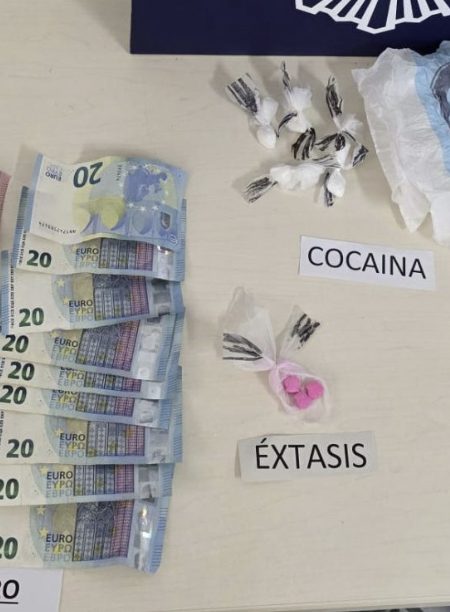Yesterday, Wednesday November 5th, Mónica García, the Minister of Health, and Xisca Sureda, the Government Delegate for the National Drug Plan, talked about the results of the most recent Survey on Drug Use in Secondary Education (ESTUDES 2025). This survey shows which drugs were most commonly used by young people in our country in the last 12 months.
The survey says that kids between the ages of 14 and 18 are using fewer psychotropic drugs in general. The usage of alcohol, tobacco, cannabis, and sedative-hypnotics has gone down in all the time periods that were looked at. In the last year, alcohol consumption has gone down by 2.6 percentage points, tobacco use has gone down by 6.5 percentage points, and cannabis use has gone down by 6.3 percentage points. There has also been a drop in the use of sedative-hypnotics for the first time since 2014.
Drinking
Alcohol is still the most widely used psychoactive drug, although the 2025 data reveals that this is less than it was the year before. 73.9% of students say they have used it at some point in their lives (down from 75.9% in 2023), 71.0% in the past year (down from 73.6%), and 51.8% in the last 30 days (down from 56.6%).
Risky behaviours are also going down: 17.2% of students have been drunk in the recent month (down from 20.8% in 2023) and 24.7% have binge drank (down from 27.8%), both at their lowest levels since 2000. The average age at which people start drinking is still 13.9 years, whereas the average age at which people start drinking every week and the first time they get intoxicated is 14.8 and 14.6 years, respectively.
Tobacco use is still clearly going down, and by 2025 it will be at its lowest point in the entire historical sequence. 27.3% of students have smoked at some point in their lives (down from 33.4% in 2023), 21.2% in the last 12 months (down from 27.7%), and 15.5% in the last 30 days (down from 21.0%). The number of people who drink every day has gone down to 4.3% in the last month, which is 3.2 percentage points lower than the 7.5% recorded in 2023.
The average age at which people start using drugs is still 14.1 years, and the average age at which people start using drugs every day is still 14.4 years. 46.4% of smokers have tried to quit in the past year, and the most common way to do so is to mix packaged and roll-your-own cigarettes.
Cannabis
Cannabis is still the most popular illegal drug among students aged 14 to 18, but the number of students who used it in 2025 was significantly lower than in the previous year across all time periods. 21.0% of students said they had used it at some point in their lives (down from 26.9% in 2023), 15.5% in the past 12 months (down from 21.8%), and 11.6% in the last 30 days (down from 15.6%).
The average age of starting is 14.8 years, which is one-tenth lower than in the last edition. This chemical has never been this low in the historical series before.
Vapes and e-cigarettes
Students aged 14 to 18 still use e-cigarettes a lot, but they are expected to use them a lot less in 2025 than they did in 2024. 49.5% say they have used them at some point in their life, which is a 5.1 percentage point decrease from 2023. Girls (50.5%) are more likely to use it than males (48.5%), and use tends to go up between the ages of 14 and 17, then go down a little at age 18.
There is also a significant rise in the sense of risk: 57.3% of students think that their occasional use can be bad for their health, which is an increase of 18.5 points from the previous year.
Hypnotics and Sedatives: 17.9% of students say they have used hypnotics and sedatives (tranquillizers and sleeping pills, with or without a prescription) at some point in their lives. This is the first time since 2014 that the use of these drugs has gone down. The average age at which people start is 14.0 years. 9.5% of students consume drugs without a prescription, which is about the same as last year. Girls are much more likely to have it, and the risk goes up with age. Even though the aggregate amount has gone down, this chemical is still a big part of non-medical applications.
How people see risk
For cannabis, the perceived risk of frequent use is the highest in the dataset (94.1%). The perceived danger of drinking too much alcohol on weekends goes up to 67.6%, whereas the perceived risk of drinking every day stays at 66.2%. A whopping 93.3% of students think that smoking every day is bad for their health.
This increase in risk perception goes along with the drop in consumption levels and shows that young people are more aware of the risks.
Other things
The study also has information about the usage of additional, less common drugs such hallucinogens, amphetamines, cocaine, heroin, MDMA (ecstasy), and volatile inhalants, in addition to the principal substances that were studied. Even though they consume a lot less, there is still a declining tendency compared to earlier editions. For instance, the percentage of people who have used cocaine in their lifetime has dropped from 2.6% in 2023 to 1.6% now. The percentage of people who have used hallucinogens has dropped from 1.4% to 1.0%, while the percentage of people who have used volatile inhalants has dropped from 2.0% to 1.0%. These numbers support the positive trend for all of the substances that were looked at, but they also show that more targeted monitoring and prevention is needed in situations where people are more likely to be harmed.









No Comment! Be the first one.